 Mysteries
Mysteries  Mysteries
Mysteries  History
History 10 Surprising Stories About the Texas Rangers
 Humans
Humans 10 Philosophers Who Were Driven Mad by Their Own Theories
 Miscellaneous
Miscellaneous 10 Video-Game-Worthy Weapons and Armors from History
 Weird Stuff
Weird Stuff 10 Psychics Who Accurately Predicted Wartime Events
 The Arts
The Arts 10 Pieces of Art Inspired by a Broken Heart
 Health
Health 10 Science Fiction-Sounding New Medical Treatments
 History
History 10 Surprising Facts About the Father of Submarine Warfare
 Space
Space Ten Astonishing New Insights into Alien Worlds
 Weird Stuff
Weird Stuff 10 Bizarre Summer Solstice Rituals Still Practiced Today
 Mysteries
Mysteries Top 10 Haunting Facts About the Ghost Ship MV Alta
 History
History 10 Surprising Stories About the Texas Rangers
 Humans
Humans 10 Philosophers Who Were Driven Mad by Their Own Theories
Who's Behind Listverse?

Jamie Frater
Head Editor
Jamie founded Listverse due to an insatiable desire to share fascinating, obscure, and bizarre facts. He has been a guest speaker on numerous national radio and television stations and is a five time published author.
More About Us Miscellaneous
Miscellaneous 10 Video-Game-Worthy Weapons and Armors from History
 Weird Stuff
Weird Stuff 10 Psychics Who Accurately Predicted Wartime Events
 The Arts
The Arts 10 Pieces of Art Inspired by a Broken Heart
 Health
Health 10 Science Fiction-Sounding New Medical Treatments
 History
History 10 Surprising Facts About the Father of Submarine Warfare
 Space
Space Ten Astonishing New Insights into Alien Worlds
 Weird Stuff
Weird Stuff 10 Bizarre Summer Solstice Rituals Still Practiced Today
10 Loving Fathers Who Snapped And Slaughtered Their Families
The best fathers self-sacrificingly dedicate themselves to building up their wives and children, serving as a strong bedrock and a shield from harm. The worst ones annihilate all that effort in an instant, when they turn their strength against their loved ones. Unfortunately, those who seem to be the best fathers can turn on their families at a moment’s notice…
SEE ALSO: Top 10 Atrocious Murders Inspired By Movies
10 William Parente
The Fallen Financier
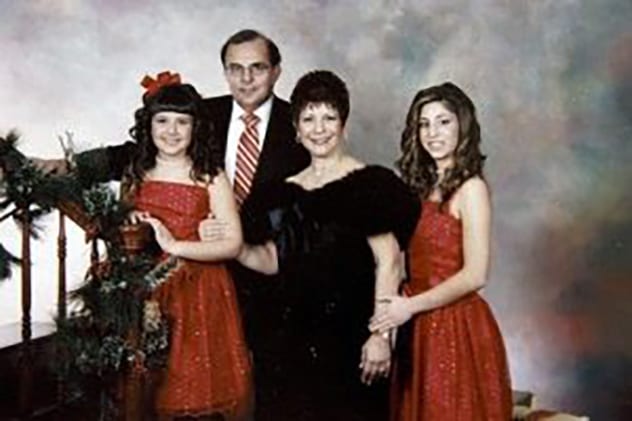 The Father: When he was 30, William Parente might have hoped to be remembered as a hotshot New York real estate attorney. At 40, it might have been a reputation for being a hardworking family man. At 58, it looked very likely that he’d be best remembered as the perpetrator of a high-stakes Ponzi scheme. Yet when he died at 59, he would attain an entirely different kind of notoriety.
The Father: When he was 30, William Parente might have hoped to be remembered as a hotshot New York real estate attorney. At 40, it might have been a reputation for being a hardworking family man. At 58, it looked very likely that he’d be best remembered as the perpetrator of a high-stakes Ponzi scheme. Yet when he died at 59, he would attain an entirely different kind of notoriety.
Parente had a lucrative career in law and high finance, but seemed to still be grounded in family matters. He provided well for his wife and daughters. Reportedly he enjoyed taking them back to the neighborhood where he grew up, to enjoy local cuisine, keeping in touch with old friends, and Halloween trick-or-treating.
Unfortunately, Parente started playing fast and loose with money late in his career. He found high-risk projects looking for starter loans, funding them with cash from others clients’ investments. In 2009, the web started to collapse around him. $245,000 in his checks had bounced, and the FBI opened an investigation into allegations that he had defrauded investors of $20 million.
The Familicide: In April, Parente took his wife and younger daughter on a trip to Maryland, supposedly to visit his elder daughter at Loyola University. Once there, however, he began steadily wiping out the women he’d spent his life providing for.
After checking into the Sheraton Hotel in Towson, Parente dismissed Catherine, 11, for a little while, so he could be alone with his wife. When Catherine returned, she found her mother (Betty Parente, 58) smothered to death. She soon joined her mother as an asphyxiated corpse on the hotel bed.
Lastly, Parente called his daughter Stephanie, 19, asking her to come to the hotel. Caught unawares, Stephanie nevertheless heeded her father’s summons. By midnight, she had not returned. When a concerned roommate called, she was told only by an odd-sounding Parente that Stephanie was “sleeping over.”
His Fate: When the hotel staff, suspicious, finally burst into the room a day later, they found all four of the Parentes dead. William had killed himself sometime in the wee hours of the morning, after killing his eldest. Parente escaped the financial difficulties and legal troubles that were hounding him – but only by paying the ultimate price, and forcing his family to pay it as well.
The extended family ensured that William was buried in a separate funeral service from that of his victims.[1]
9 Simon Peter Nelson
The Daddy-Issues Killer
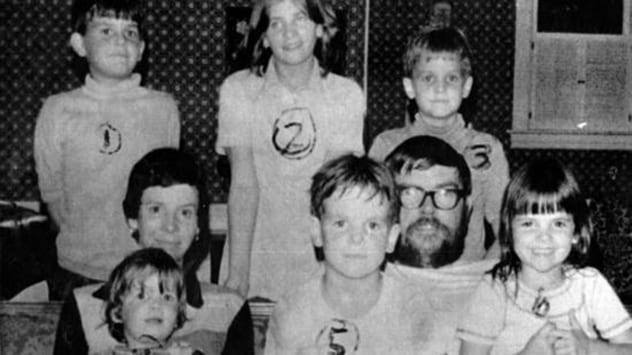 The Father: Previously featured on 10 Men Who Killed Their Families, Simon Peter Nelson, Jr., of Illinois, set out on a destructive track from an early age. An abusive father (Simon Peter Nelson, Sr.) warped the son’s childhood, then killed himself when Junior was still a child – leaving no way for the son to get closure on the abuse. Nelson Jr., as he grew up, fell into depression and his own suicidal thoughts, and eventually based his entire existence on whether a woman wanted him or not. When his first wife divorced him in 1961, he threatened to kill himself, but she left him anyway. He married again, fathering six children with his second wife Ann, but his crippling self-doubt lingered.
The Father: Previously featured on 10 Men Who Killed Their Families, Simon Peter Nelson, Jr., of Illinois, set out on a destructive track from an early age. An abusive father (Simon Peter Nelson, Sr.) warped the son’s childhood, then killed himself when Junior was still a child – leaving no way for the son to get closure on the abuse. Nelson Jr., as he grew up, fell into depression and his own suicidal thoughts, and eventually based his entire existence on whether a woman wanted him or not. When his first wife divorced him in 1961, he threatened to kill himself, but she left him anyway. He married again, fathering six children with his second wife Ann, but his crippling self-doubt lingered.
He was never able to hold down a steady job, leaving his wife to do much of the breadwinning. His lack of motivation, along with his alcoholism, led him to neglect his children – they often came to school dirty, wearing old and shabby clothes. Arguments with Ann were legion, and he regularly used suicide threats to try to win her sympathy. She was contemplating divorce, and the thought seemed to drive him mad. When she moved out to stay in a hotel, sending word that she was going to follow through on the divorce, something in Nelson broke.
The Familicide: In moving out to protect herself, Ann had left the six children alone with their father. This proved a tragic mistake. In the early hours of January 7, 1978 – after ending a fruitless final phone call with Ann – Nelson turned homicidal.
In the girls’ room, Jenny (12) and Roseann (6) died together in the bed they shared, their skulls crushed with a mallet and their bodies stabbed repeatedly. The family dog died between them, its throat slit. In the boys’ room, David (3), Matthew (7), Andrew (8), and Simon (10) likewise fell under the onslaught of the mallet and knife. All were killed as they slept. Nelson testified later that he imagined his own deceased father was the one doing the killing, murdering his way through the house, and imagined himself among the victims. This horrific fantasy was probably at its height while his mallet was bashing in the head of his son and namesake, Simon Peter Nelson III.
Having completed the horrific deed, Nelson drove to the hotel where his wife was staying and gained entrance to her room. He told her, hauntingly, “”Call a priest, call two priests. Then call the police…I’ve killed the children and I’ve done it in such a spectacular way that you’ll never work again…They’re all dead. How do you feel?” After hurling his glasses to the floor and shouting “Daddy!”, Nelson began beating her. He was still shouting it when police pulled him off.
His Fate: Nelson claimed attempted insanity in court – and may have avoided the death penalty by doing so – but that was as far as the jury’s leniency went. They sentenced him to 200 years in prison. After no fewer than nineteen failed attempts to gain parole, he died in prison on June 18, 2017.[2]
8 Christian Longo
Family as an Impediment to Vacation
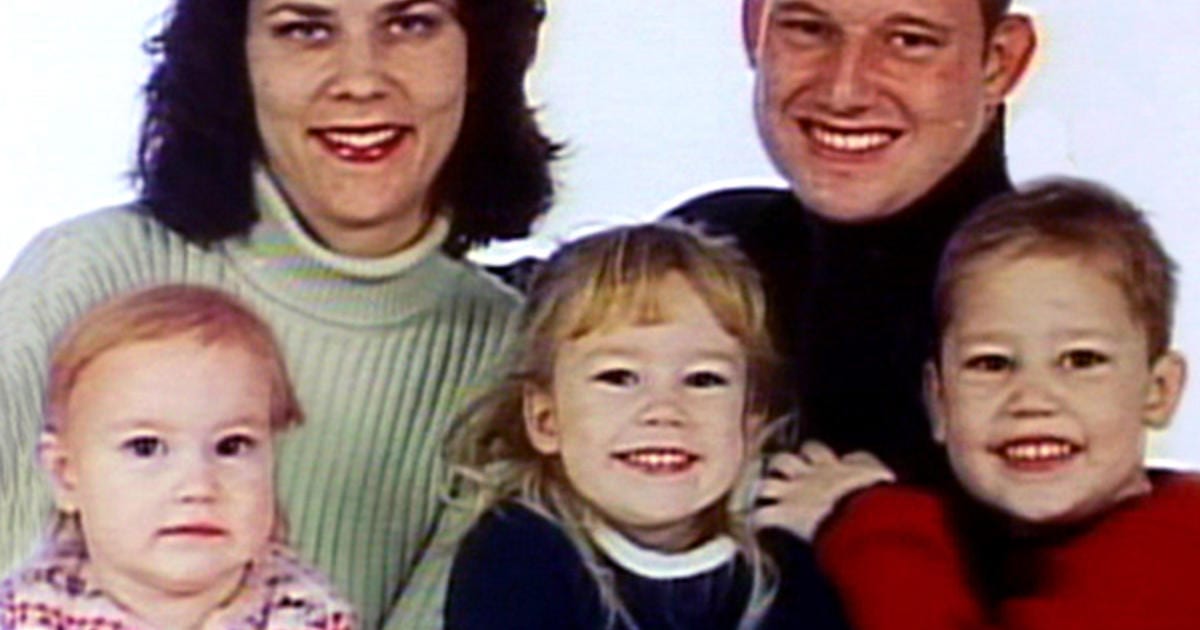 The Father: Christian Longo wanted the finer things in life – trips abroad, nice cars, fine wine, etc. In this he was not too different from many other people. The crucial difference was his willingness to kill others in pursuit of the finer things – and not just any others.
The Father: Christian Longo wanted the finer things in life – trips abroad, nice cars, fine wine, etc. In this he was not too different from many other people. The crucial difference was his willingness to kill others in pursuit of the finer things – and not just any others.
By his late twenties, Longo had already proved a failure in numerous ways. His business ventures had imploded, his work for others had ended in terminations, and he was on the run from con victims and creditors several times over. He dragged his exhausted young family from Michigan to Ohio to Oregon, and they dutifully stayed with him. Sadly though, rather than seeing them as a safety net of support, he saw them as anchors weighing him down.
The Familicide: Longo’s first victims were his wife MaryJane (34) and youngest daughter Madison (2). After strangling both, he packed the pair of bodies into a large suitcase and heaved it into the ocean off the Oregon coast. Shortly thereafter, he took the other children – Zachery, 4, and Sadie, 3 – on a macabre trip up the coast road.
We do not know if they asked where Mommy was, on that final drive. We do not know if they asked why there were rocks tied to their feet. We do not know if they asked why their father was stopping the car in the middle of a bridge. We don’t even know which one he dropped over the side first.
We only know that he drove home alone.
His Fate: The bodies began washing up on the Oregon shore a few days before Christmas. The missing Longo was immediately suspected, but it took the authorities a little while to track him down. They finally did, in 2002, after placing him on the FBI’s Ten Most Wanted list. Longo had packed his remaining suitcases and gone to live the high life in Mexico. Police found him there, at a beach resort in Cancun. Finally uninhibited, he had wined and dined himself, smoked marijuana, snorkeled, and already found himself a new girlfriend, a German tourist.
Extradited back to Oregon, Longo was soon convicted and sentenced to death. He remains on death row today, living very much the opposite of the life he wanted. Since then he has spent his time developing failed proposals for an organ donation program for death row inmates.
It remains an open question whether any organ recipient would want a heart as black as his.[3]
7 Steven Sueppel
Adoptive Murder
 The Father: For thousands of children, adoption is a life-changing event, guaranteeing them parental love and a brighter future. Tragically, for four Iowa children, being adopted by an unhinged embezzler was a life-ending event.
The Father: For thousands of children, adoption is a life-changing event, guaranteeing them parental love and a brighter future. Tragically, for four Iowa children, being adopted by an unhinged embezzler was a life-ending event.
On Easter Sunday, 2008, Steven Sueppel and his wife Sheryl took their four adopted children to Mass. Grandparents and friends noticed nothing unusual about their behavior. Steven kept quiet; he had not told anyone about his impending trial for embezzlement and money laundering. The trial was set to begin in just a few weeks – but like William Parente, Steven wished to spare himself and his family the embarrassment of legal humiliation. And like Parente, his solution was that dead people can’t be humiliated.
The Familicide: That night, Sueppel began his preemptive campaign by beating his wife to death with a baseball bat. It was then that the former banker’s morbid incompetence began to emerge. He had tried to drown himself in the Iowa River, but “kept floating back up to the top” (as he said in a mournful message later found by police). Around midnight he shepherded the kids into the family minivan, trying to kill himself and them by carbon monoxide poisoning. This, too, failed.
Growing impatient, he took his kids back inside and resorted to his earlier method, the baseball bat. Ethan (10), Seth (9), and Mira (5) died in their bedrooms, of massive blunt trauma to their heads and torsos. Eleanor (3) had taken refuge in the playroom; after switching to a fresh bat, Sueppel finished her off amidst her toys.
His Fate: Sueppel whiled away a few hours recording confession letters and voicemails, before calling police from his mobile phone. He simply asked them to go to the family home and hung up. Five minutes later, he finally succeeded in killing himself. His car slammed into a bridge abutment at high speed, and he died in either the impact or the inferno that followed.
When the Sueppel’s funeral was held – in the same church where they’d celebrated Easter the week before – all six were memorialized together. This caused an uproar in the city’s Catholic population, as many objected to a joint funeral Mass for such a killer. The Mass went ahead anyway.
Fathering a child and bringing him or her into the world carries with it an implicit (and automatic) duty to protect that child. Thus we rightly abhor the actions of a father killing his biological offspring. Yet Steven Sueppel had no obligation to these four children until he voluntarily and explicitly took it on. We can’t know why he reneged so violently on his promise – only that it makes for a particularly cruel form of betrayal.[4]
6 John Sharp
The Morningside Monster
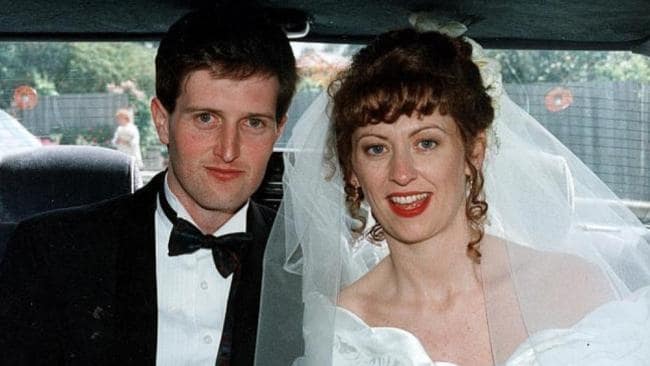 The Father: Some family killers discover their malice suddenly, in fits of rage or insanity. For others, the malice builds in a slow boil over a long period. John Sharpe, a resident of the Australian suburb of Morningside, was one of the latter. He carefully cultivated a resentment of his dependent loved ones, until it grew into a vicious homicide.
The Father: Some family killers discover their malice suddenly, in fits of rage or insanity. For others, the malice builds in a slow boil over a long period. John Sharpe, a resident of the Australian suburb of Morningside, was one of the latter. He carefully cultivated a resentment of his dependent loved ones, until it grew into a vicious homicide.
Sharpe married Anna Kemp in 1994; eight years later, their daughter Gracie was born. The young girl suffered from hip dysplasia, requiring her to wear a corrective harness as an infant. The pain made it difficult for her to eat or sleep well, and the strain of caring for her took its toll on the new parents. Anna sought counseling. John merely stewed in his growing anger.
To John’s surprise, Anna became pregnant again in late 2003. Affronted by this – feeling that one child was burden enough – John took up a highly unusual hobby. He started practicing his aim with a speargun.
The Familicide: In March 2004, Anna Kemp did something ill-advised: She went to bed angry after a fight. It was a sleep she’d never wake up from. As she slept, John loaded the speargun, aimed it at her temple, and fired from point-blank range. Then he did it again. The second shot killed Anna and her unborn child – a boy they’d already named Francis.
After dropping his daughter off at daycare, Sharpe removed the spears from his wife’s skull and buried her in a shallow backyard grave. He spent the next four days caring for his daughter alone, while working up the nerve to kill her. During the interim he took her on an errand to purchase another spear.
On March 27 he put Gracie to bed, then numbed himself with several rum-and-Cokes. The speargun received its new ammunition. He aimed it at her face, fired, and the two-year-old woke up screaming.
Once again, the first shot had failed to kill his victim. Sharpe retrieved the two spears from his wife’s murder and fired these into Gracie’s head as well. Incredibly, the child still lived. Out of ammunition, Sharpe wrenched one spear out of her skull, in order to fire it again. The fourth shot killed her.
Taping up Gracie’s body in trash bags, her father left her at the local dump. After digging up and dismembering his wife, he did the same with her. It had been a hell of a week.
His Fate: John Sharpe soon matched his outrageous cruelty with outrageous deception. He sent false messages and gifts to family members, impersonating Anna. When suspicious relatives reported the disappearances anyway, Sharpe told police Anna had run off with another man, taking Gracie with her. He even appeared in several televised national interviews, feigning ignorance, begging Anna to come home. He even had the nerve to ask the public for help in finding her.
He kept up the farce until June, but finally confessed to the police under interrogation. His statements led officers to conduct a three-week search of the dump, where they eventually recovered both bodies. They are buried together now, under Anna’s maiden name.
Sharpe, for his part, pled guilty and received two life sentences. Under protective custody – due to death threats from other prisoners – he remains incarcerated today. He will be eligible for parole in 2037.[5]
5 Mesac Demas
A Demoniac Dad
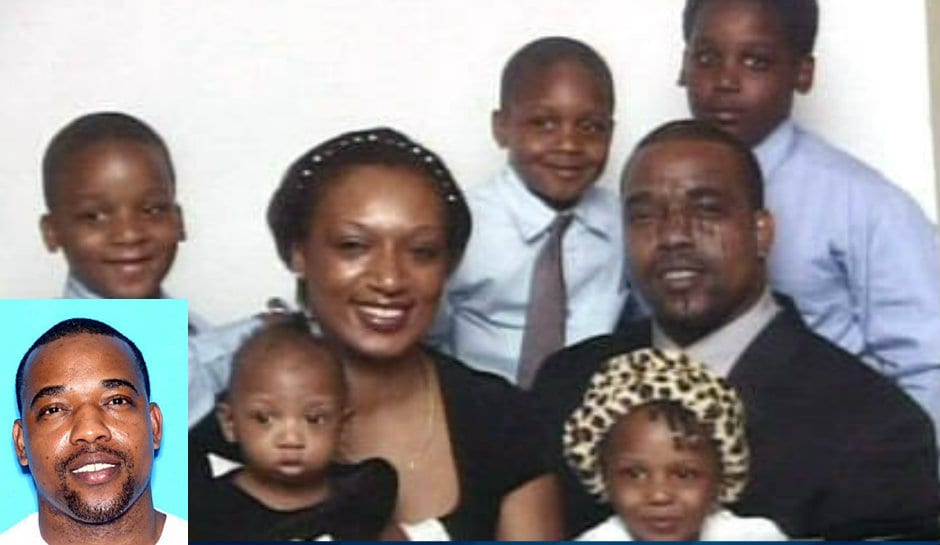 The Father: As a boy, Mesac Demas lived an unstable and troubled life in Haiti during the 1970s and 1980s. Even his moral formation was uneven – his parents raised him as an Evangelical Christian until they left him behind to immigrate to the United States. At that point, relatives practicing Haitian voodoo took over his upbringing. The only constant in his life seemed to be an emphasis on evil spirits’ ability to influence the world. He would eventually commit the deeds he said they were urging him toward.
The Father: As a boy, Mesac Demas lived an unstable and troubled life in Haiti during the 1970s and 1980s. Even his moral formation was uneven – his parents raised him as an Evangelical Christian until they left him behind to immigrate to the United States. At that point, relatives practicing Haitian voodoo took over his upbringing. The only constant in his life seemed to be an emphasis on evil spirits’ ability to influence the world. He would eventually commit the deeds he said they were urging him toward.
After immigrating to the United States himself at age 19, Demas settled in Florida, where he married Guerline Dieu. The couple quickly had five children. However, their home life was far from blissful. Demas had a history of domestic violence with his wife, and pled no contest to a battery charge in January 2009. That September, Guerline told him she was considering divorce…and that put him over the edge.
The Familicide: Demas wasted little time. Twenty-four hours after the mention of divorce, Demas ambushed his wife on her return from work, restrained her with rope and duct tape, and beat her to death. Then – apparently blaming his wife for the actions he was about to undertake – Demas turned on his children. Michzach (9), Marven (6), Maven (5), Megan (3), and Morgan (11 months) fled through the family townhouse, hunted down by their father. Each died from either a slashed throat or a snapped neck.
Disdaining suicide “because it might keep him out of heaven” (ignoring whether his murders would do the same), Demas fled to Haiti.
His Fate: Authorities soon tracked Demas down in Port-au-Prince. As far as Demas was concerned, his guilt was never in doubt – he confessed to anyone who would listen that he had committed the crimes, though he had a list of culprits who he said drove him to it. His wife, for daring to consider leaving him. His mother-in-law, for supposedly putting a voodoo hex on him. Evil spirits, summoned by the hex and inspiring his deadly rampage. Despite the blame-shifting, Demas said he wanted death, and quickly. All the sooner to reunite him with his family.
Evidence of a diseased mind put Demas at the center of a turbulent eight-year courtroom circus. Conflicting diagnoses flip-flopped on his competency to stand trial. His wild, disruptive behavior in court complicated proceedings. But in October 2017, Demas and the Florida circuit court finally agreed upon the justice due in his case – a death sentence. Six of them, in fact.[6]
4 Abel Clemmons
The Axe-Man of Clarksburg
 The Father: Like Simon Nelson, we have previously featured Abel Clemons, but a list like this would not be complete without him. Most of the stories cited here are relatively recent, but it’s evident that the phenomenon of fathers turning on their families is not limited to the modern era. Abel Clemmons, an early settler of western (now West) Virginia, is a prime example. As with other men, Clemmons’ crimes seem to stem from a toxic combination of paternal absence, mental instability, and economic hardship.
The Father: Like Simon Nelson, we have previously featured Abel Clemons, but a list like this would not be complete without him. Most of the stories cited here are relatively recent, but it’s evident that the phenomenon of fathers turning on their families is not limited to the modern era. Abel Clemmons, an early settler of western (now West) Virginia, is a prime example. As with other men, Clemmons’ crimes seem to stem from a toxic combination of paternal absence, mental instability, and economic hardship.
Clemmons began life in wild and disordered fashion, spending himself in drinking, sex and debauchery from the age of 15. His father had killed himself when Clemmons was young, and his mother fruitlessly attempted to keep her son on the straight and narrow. Within two years, he was reportedly engaged to seven different women in the local vicinity, and had to flee to avoid prosecution for various crimes.
Eventually, fearing God’s wrath, he straightened himself out and married a Clarksburg woman named Barbara Carpenter. He was 19, and his life story already contained a whirlwind fall-and-redemption that would be impressive in someone twice that age. It is unsurprising that his turbulence would continue.
In the next eleven years, Clemmons would father nine children with Barbara. Like the rest of his life, Clemmons’ family had exploded onto the scene with frantic speed – and would be snuffed out again in similar fashion.
The Familicide: Convinced that God had cursed him for being unwilling to leave Virginia for Ohio, and burdened with the thought that he would be unable to provide for his family, Clemmons slipped deeper into the grip of insanity. Determining to kill his family to save them from potential ruin, he mulled over the deed with miserable uncertainty. Half a dozen times he stood over them as they slept, axe in hand, urging himself to act. Several times his wife awoke and asked him what he was doing awake – in each case, he told her he was merely “admiring her beauties while sleeping.” Half a dozen times he swore he would not follow through on his murderous intent – but the manic compulsions did not stop.
Finally, in November 1805, he took the plunge. He arose in the night, placed himself over each family member in turn, and killed them instantly with a mighty blow from the axe. The savagely sudden nature of each attack meant that he committed each murder in the single-room cabin without waking the others. Methodically Elijah, Hester, Rachel, Mary, Benjamin, and Amos died noiselessly under the terrible weapon. Next Barbara and her unborn child – a month from birth – were killed. Last came Clemmons’ two remaining daughters; Clemmons’ aim was less sure with them, and they awoke before they died. As he put it, “They all died easy, except my two little girls, Betsy and Parthenia; the struggles of whom, added to the already indescribable horrors and tortures of my mind [sic].”
Terrifyingly, Clemmons’ niece was in the cabin that night as well. She huddled speechless amid the carnage, while Clemmons artfully arranged the bodies and lectured her on a child’s duty to obey her parents. He left her unharmed – physically unharmed, at least.
His Fate: Clemmons fled to the nearby rocky cliffs, wishing to kill himself but unable to bring himself to do it. After days of tormented wandering, evading local search parties, he finally staggered to his mother’s house, starving and delirious. His extended relatives arranged for his arrest.
While the paternal barbarity of such men is unchanged in our own time, the procedures of historical justice were quite different. Unlike the other survivors in this article, lingering for decades in judicial limbo or on death row, Clemmons’ end was swift. He was convicted within a few weeks of the slayings, allowed time to give his testimony in jail (the source of the quotes above), and hanged in early 1806.
Clemmons’ cabin in the eastern part of Clarksburg no longer stands. Still, the area remains one of the most reputedly haunted spots in all of West Virginia.[7]
3 Mark Barton
Sparking a Rampage
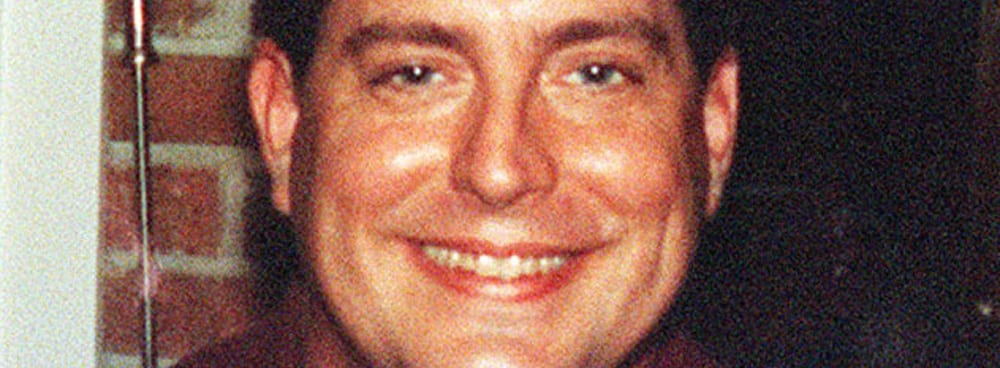 The Father: It seems to be an all-too-familiar template that some men are spurred to murder by the threat of financial distress. Neither is it a coincidence that the distress they fear was often caused by their own mistakes in the first place. Some men stop at self-murder; others kill their families but no one else. But some – like Mark Barton – use familicide as a jumping-off point to vent their anger at the world.
The Father: It seems to be an all-too-familiar template that some men are spurred to murder by the threat of financial distress. Neither is it a coincidence that the distress they fear was often caused by their own mistakes in the first place. Some men stop at self-murder; others kill their families but no one else. But some – like Mark Barton – use familicide as a jumping-off point to vent their anger at the world.
By the time Barton married Leigh Ann Vandriver in 1995, he already had a highly questionable past. There was his mental illness, chock full of delusions and paranoia, and his petty criminality at work, which earned him a stint in jail. There was the fact that the wedding grew out of an affair begun during his first marriage. Not to mention the fact that said first marriage ended in the unsolved beating deaths of his wife Debra and her mother. The fact that Debra’s death netted him $300,000 in insurance money – to play the stock market with – was merely icing on the cake.
The Familicide: Barton played the market poorly, however, and he lost over $100,000 in June 1999. His day trading firm terminated his account after the losses. This was the catalyst.
On July 27, Barton set his alarm early, so he would be sure to catch his wife while she was still asleep. He bludgeoned her to death in their bed. After that, he spent the next 36 hours playing things off as normal. Not till the evening of July 28 did he turn on his children Matthew (11) and Mychelle (8). They had survived his first marriage; they survived the second by only a day.
Laying his family members in bed, he pinned notes to their bodies. The notes confessed to his crimes, paradoxically blaming the family for his downfall and proclaiming his love for them. Afterward, he spent the night in the corpses’ company.
He wasn’t done. The next morning he loaded two pistols and set out for the offices of two day trading firms that had formerly employed him. When the smoke cleared, nine more people were dead, along with thirteen wounded.
His Fate: Barton went on the run, but it didn’t last long. He tried to kidnap a young girl, possibly hoping to use her as a hostage, but she escaped and called police. Responding officers closed in. After chasing Barton’s minivan, they cornered him at a gas station. There, in a final act of cowardice, he killed himself.[8]
2 Ernst August Wagner
A Bestial Man
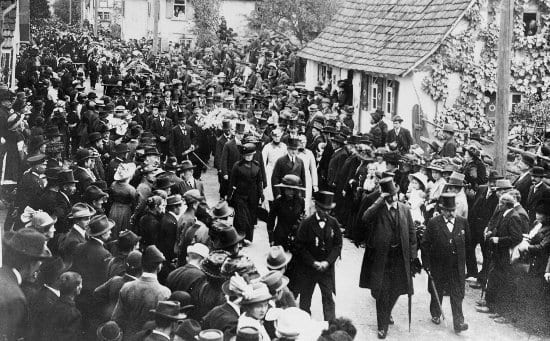 The Father: Ernst Wagner (born 1874) had no example growing up of how to construct a healthy home life. The poverty-stricken family lost its breadwinner, Wagner’s alcoholic father, when the boy was only 2. His mother’s second marriage ended in divorce only five years later, due to her constant infidelity. A lack of parental attention may have contributed to the fact that nine of the boy’s twelve siblings died before reaching adulthood. Wagner was hardened toward death from an early age.
The Father: Ernst Wagner (born 1874) had no example growing up of how to construct a healthy home life. The poverty-stricken family lost its breadwinner, Wagner’s alcoholic father, when the boy was only 2. His mother’s second marriage ended in divorce only five years later, due to her constant infidelity. A lack of parental attention may have contributed to the fact that nine of the boy’s twelve siblings died before reaching adulthood. Wagner was hardened toward death from an early age.
He grew up to become a troubled schoolteacher. Despite depression, suicide attempts, bestiality, and paranoia about local villagers discovering said bestiality, Wagner did not disqualify himself as a romantic partner. He found time to seduce an innkeeper’s daughter, enter a shotgun marriage after impregnating her, and father several more children. There seemed to be no hope of fatherhood banishing his inner demons, however. He reportedly had no affection for his wife and children, his main opinion being resentment at the expense they represented. His sense of being hated by others continued to intensify, until in 1912 he decided to plot a savage revenge. The villagers would soon pay for their supposed hatred – and Wagner would ensure he had no more mouths to feed.
The Familicide: After over a year of meticulous planning, Wagner embarked on his revenge spree. It began at home. As his wife and children slept, he systematically bludgeoned each to prevent any resistance. Then he took a knife to their throats and chests, stabbing again and again until they died of massive hemorrhages. Klara Wagner (10), Elsa (8), Robert (6), and Richard (5) all lay dead inside the home.
Taking a moment to change out his blood-soaked nightshirt, Wagner still looked ahead. He was just getting started.
His wife’s home village of Muhlhausen, where he had first felt supposedly judging eyes, would now bear the brunt of his fury. Arriving close to midnight, in a driving rain, Wagner began a rampage. He stoked a fire in four different barns, using the blaze to draw people out. As villagers emerged to see what was the matter, he mowed them down with a pair of pistols. His face masked with a black veil he’d taken from his wife, he battled the fearful and enraged townspeople, eventually killing nine and wounding eleven more. The nightmare only ended when Wagner forgot to reload, and a group of villagers descended upon him with hoes and swords. They beat him down, mutilated him, and left him lying in the gutter.
His Fate: Still, he wasn’t dead. A policeman later discovered he was still alive, and rushed him to a hospital. Due to the severity of his injuries, his left forearm was amputated. He confessed to the family killings during the operation.
He would eventually be found not guilty by reason of insanity – the first in the region to receive such a verdict – and sent to an asylum. Wagner lived there for another quarter century, living a quiet life as an amateur playwright, before finally dying of tuberculosis in 1938. The fact that he died in bed, well-cared for to the end, was a source of endless bitterness to the families of his victims. He benefited from a system more merciful than he was.[9]
1 Ramon Salcido
A Bittersweet Conclusion
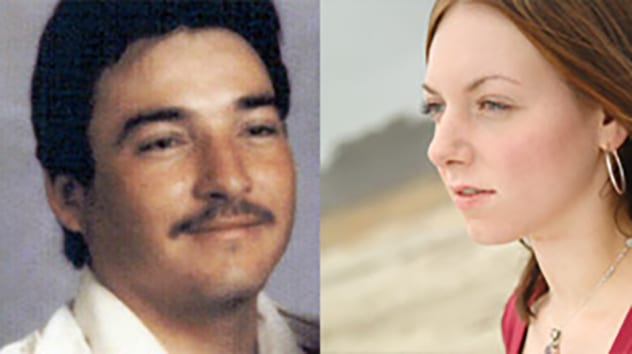 The Father: Unlike many others listed here, Ramon Salcido, a Mexican immigrant to California, did not have anger motivated by economic desperation. Rather, his rage was unleashed in response to his wife’s infidelity. Unfortunately, his disproportionate backlash claimed many more lives – including children who (naturally) had no choice in who their parents were.
The Father: Unlike many others listed here, Ramon Salcido, a Mexican immigrant to California, did not have anger motivated by economic desperation. Rather, his rage was unleashed in response to his wife’s infidelity. Unfortunately, his disproportionate backlash claimed many more lives – including children who (naturally) had no choice in who their parents were.
In April 1989, Salcido’s wife Angela told him that their oldest daughter, Sofia, had definitely been fathered by another man before the Salcidos were married. She also told him she was considering divorce, and promptly left the family home. Like Simon Nelson’s wife, she seems to have had no worries about leaving the children alone with their father. After all, she was the one he was mad at…
The Familicide: Angela had not only left Ramon with the children – she’d left him alone with his drugs and alcohol. After a long evening drinking and snorting cocaine, he finally snapped. He packed Sofia (4), Carmina (2), and Teresa (1) into the car and drove them to the county dump in the middle of the night. He brought a knife. One by one he slit his daughters’ throats and rolled them into the landfill.
These were the first horrific acts of a horrific night. Over the next few hours he targeted his mother-in-law (Marion Louise Richards, 47), Angela (24), and a coworker he had a grudge against (Tracey Toovey, 35). Even Angela’s two young sisters (Ruth and Maria Richards, 12 and 8 respectively) did not survive the carnage.
Afterward, coming out of the drug-fueled haze of his wrath, Salcido considered suicide. A phone call with his mother convinced him not to. Instead he fled back to his native Mexico.
His Fate: He wasn’t on the run for very long. Authorities in Mexico arrested Salcido after a few days, and arranged his extradition back to the United States. While in custody, he never disputed the killings; on the contrary, he admitted to them, blaming his wife’s infidelity and the drugs and alcohol for causing a “psychotic depression.” He told investigators everything he knew. However, there was one part of the truth he couldn’t tell, because he didn’t know it himself.
His daughter Carmina was still alive.
Astonishingly, Salcido’s middle daughter had survived the throat cutting. She had lain grievously wounded for thirty-six hours, between the bodies of her sisters, before being discovered by a homeless man. All she could murmur: “My daddy cut me.”
Her survival confounded the doctors at Petaluma Valley Hospital. “She shouldn’t have survived the injuries that she had,” said one. Carmina, fearing for her life, had kept her head tucked down, coincidentally covering the neck wound and limiting the amount of her blood loss. It was just enough.
Salcido, convicted of all seven murders, was sentenced to die in the San Quentin gas chamber. As of this writing, he has been on death row for 29 years.
Carmina, for her part, had a rocky road still ahead. There was a laborious recovery and a frightening trial. There was abusive foster care, psychological trauma, and years spent cycling between care institutions. Still, she persevered. Crediting her faith for guiding her, Carmina fought to regain a sense of trust and identity, wrote a book about her experience, and mustered the courage to confront her father in prison.
Life has not been easy for her since then, and perhaps may never be. But she soldiers on, doing the best she can. As she put it, “I don’t have my family, but there’s nothing I can do to change that. I know one day I will be with them, so I have to live my life.” Stories like Ramon’s – and the others listed here – can make us reflect on human depravity. Stories like Carmina’s should remind us that human hope and resilience can persist, even after tragedy.[10]
For more murderous lists, have a read of 10 Torture Murders That Will Curdle Your Blood, and 10 Murderers Who Did Not Kill Anybody.
About The Author: David F. Ellrod lives in Maryland with his wife, three daughters, and one very excitable dog.








